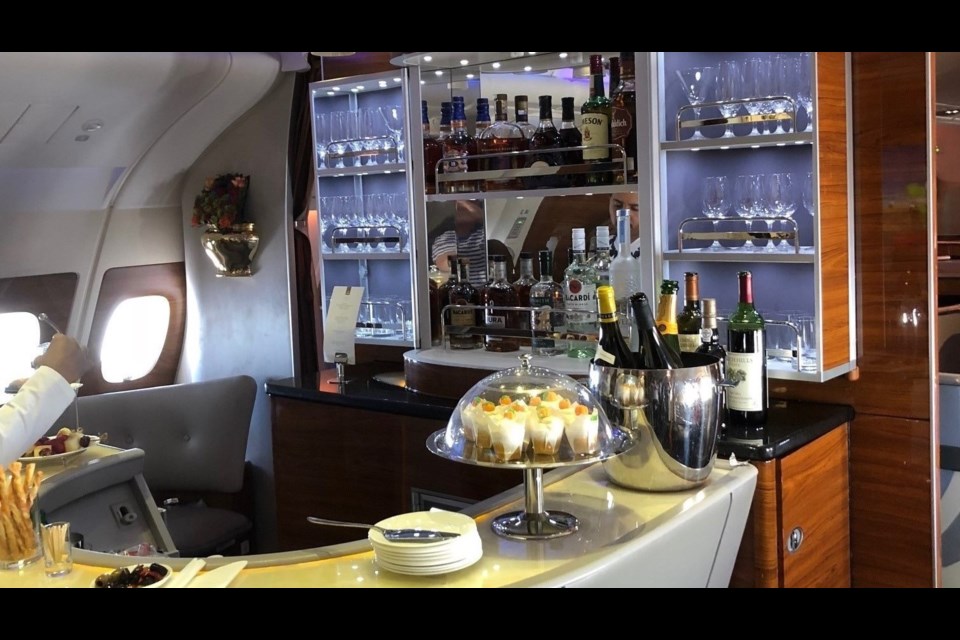Many people do not realize that wines actually taste different when you drink them on an airplane during a flight (as compared to when you are normally drinking wines at sea level). This is because airplanes are typically pressurized to ensure that passengers are receiving enough oxygen. This creates a very dry environment. Most airplane cabins have a humidity of about 20 per cent, which is equivalent to the dryness in a desert. This arid environment dries out your tastebuds and nostrils, which affects your sense of smell and taste. Some studies show our perception of taste is affected by what we smell.
In general, we do not experience sweet and salty flavours as strongly when we are flying at high altitudes. Knowing this, airlines make the food served on airplanes sweeter or saltier than usual so that the food still tastes flavourful. But the wines served on an airplane are the same wines served on the ground. So with this in mind, here are my recommendations of what wines to drink onboard an airplane:
1. To get the best representation of what a wine will taste like on the ground, drink it early on during the flight, before your palate and nose dry out.
2. Generally, wines will taste more acidic and tannin on an airplane. Having that in mind, you should drink wines that are low in tannins and acidity. You are looking for wines that are clean and fruity.
3. For white wines, I would stay away from light wines (which will seem lighter and less aromatic on an airplane) like Pinot Grigio. I would recommend Rieslings (which may taste less sweet in the air) and unoaked or slightly oaked Chardonnay or Viognier wines (oaked wines might feel flabby in the air). Sauvignon Blanc would also be a good choice, as the airplane environment will tone down the normally acidic grape varietal.
4. For red wines, I would stay away from young, tannic wines. Surprisingly, on an airplane, a very expensive young Bordeaux wine will probably not taste as good as a value Bordeaux wine that is less tannic. I would go with fruity Pinot Noir, Rioja Spanish wines and Argentinean Malbec (which have medium tannins). Big, bold but fruity wines (like Australian Shiraz) would also work.
5. How about Champagne? Fruity styles of Champagne or other sparkling wines (like Prosecco) would work but they should be consumed early in the flight when the delicate aromas of the wine can still be detected by your nose. However, consuming carbonated beverages is generally not good when you are flying, as carbon dioxide expands in your stomach when you are in the low-pressure environment of an airplane. This may cause some people to have gas in their stomachs.
6. For those who choose not to drink alcohol onboard, try drinks that are less acidic and sweet. Many people believe tomato juice tastes better on board an airplane because it contains umami, which is unaffected by the airplane environment. Other foods that contain umami are seaweed, mushrooms and soy sauce.
So next time you are an airplane, try wines you would not normally prefer on the ground and see if the airplane environment affects how you feel about the wine. You may find your favourite airplane wine! For more information about how an airplane experience can affect how your wine preferences, click here.
Tony Kwan is the Richmond News' new columnist. Lawyer by day, food and wine lover by night, Kwan is an epicurean who writes about wine, food and enjoying all that life has to offer.



